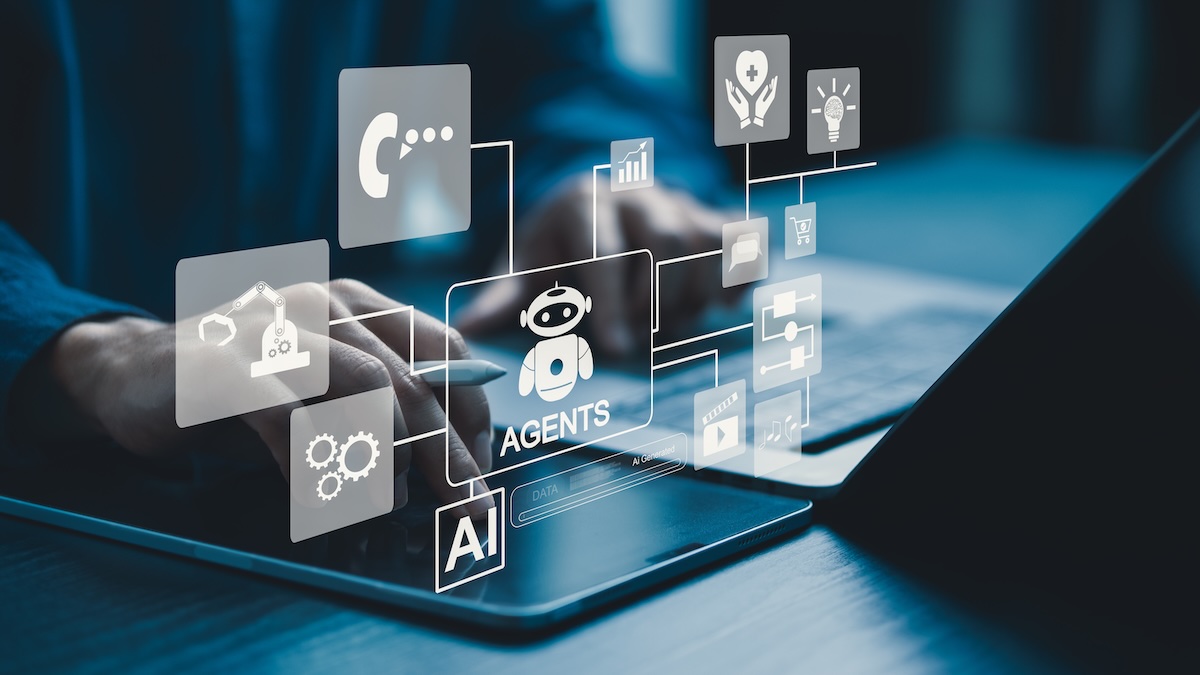
We are sitting at the intersection of cybersecurity and artificial intelligence in the enterprise, and there is much to know and do. Our goal is not just to keep you updated with the latest AI, cybersecurity, and other crucial tech trends and breakthroughs that may matter to you, but also to feed your curiosity.
Thanks for being part of our fantastic community!
In this edition:
Did You Know - Cybersecurity Challenges for Leaders
Article - 5 Important Challenges Facing Cybersecurity Leaders
Cybersecurity News & Bytes
AI Power Prompt
Social Media Image of the Week
Did You Know - Cybersecurity Challenges for Leaders
Did you know 76 % of CISOs anticipate a material cyberattack in the next year, yet 58 % admit their organization is unprepared to respond? Source: Proofpoint’s 2025 Voice of the CISO Report
Did you know 66 % of CISOs cite human risk—people-related vulnerabilities—as their greatest cybersecurity challenge? Source: Proofpoint’s 2025 Voice of the CISO Report
Did you know 92 % of CISOs who experienced data loss say departing employees contributed to the incident? Source: Proofpoint’s 2025 Voice of the CISO Report
Did you know 64 % of CISOs see enabling safe GenAI tool use as a strategic priority over the next two years, even amid mounting security concerns? Source: Proofpoint’s 2025 Voice of the CISO Report
Did you know 86 % of business leaders with cybersecurity responsibilities reported at least one AI-related incident in the past year? Source: Cisco Cybersecurity Readiness Index 2025
Did you know only 48 % of those leaders believe employees understand how malicious actors use AI to enhance their attacks? Source: Cisco Cybersecurity Readiness Index 2025
Did you know 45 % of organizations lack the internal resources and expertise to conduct proper AI security assessments? Source: Cisco Cybersecurity Readiness Index 2025
Did you know 39 % of cybersecurity professionals fear a lack of organizational buy-in poses the greatest risk in their roles? Source: Silent Breach survey

5 Important Challenges Facing Cybersecurity Leaders
Here are some important issues that keeps them awake at night.
Cybersecurity leaders today are walking a tightrope between business growth, complex technology, and relentless threats. The pace of change is overwhelming and the stakes are higher than ever. What keeps them awake at night is not only the sophistication of attackers but also the responsibility of safeguarding trust, safety, and continuity. Here are five of the most pressing challenges they face in a human centered world where security impacts lives as much as business outcomes.
1) The relentless rise of AI driven threats
Attackers now have access to tools that can mimic human behavior, generate realistic phishing content, and create adaptive malware. These AI powered threats learn as they go, making old defenses look slow and outdated. Security leaders must figure out how to match speed with speed, while also ensuring their own AI defenses do not introduce blind spots or ethical risks.
2) Talent shortages and burnout
The skills gap in cybersecurity is nothing new, but it is now a crisis. Many teams operate with skeleton crews and long hours, which leads to fatigue and mistakes. Retaining talent is just as hard as hiring it. Leaders are under pressure to invest in automation and cross training while building cultures where people feel valued, supported, and part of something bigger than just stopping attacks.
3) Expanding attack surfaces with no clear boundaries
The perimeter has dissolved. From cloud platforms to IoT sensors to employees working from anywhere, the digital footprint of an organization is massive. Each new tool or vendor adds complexity and risk. Leaders are struggling to gain visibility and control across this sprawl while still enabling the innovation that businesses demand.
4) Boardroom expectations and accountability
Cybersecurity has become a standing agenda item for boards and regulators. Leaders are asked to explain threats in plain language, justify budgets, and guarantee resilience. Every incident has the potential to damage reputations and careers. Communicating effectively with non technical audiences is now as critical as deploying firewalls or endpoint defenses.
5) The human factor that refuses to go away
Even with the best technology, people remain the biggest risk. Clicking on links, reusing passwords, falling for deepfakes or social engineering tricks. Security leaders know that culture, awareness, and behavior are the hardest elements to shift. Training programs often feel like checkboxes rather than real learning moments. Inspiring employees to care about security as much as leaders do is an ongoing challenge.
Looking ahead
These five challenges are not isolated. They intersect, compound, and evolve. AI threats demand talent, but the shortage of talent makes it harder to respond. Expanding attack surfaces amplify the human factor, while board scrutiny adds pressure.
Cybersecurity leaders are not just technical guardians anymore, they are business strategists, communicators, and culture shapers. What keeps them awake at night is not fear alone, but the knowledge that their work protects the trust that businesses, employees, and communities depend on every single day.
Cybersecurity is no longer just about prevention—it’s about rapid recovery and resilience!
Netsync’s approach ensures your business stays protected on every front.
We help you take control of identity and access, fortify every device and network, and build recovery systems that support the business by minimizing downtime and data loss. With our layered strategy, you’re not just securing against attacks—you’re ensuring business continuity with confidence.
Learn more about Netsync at www.netsync.com
Artificial Intelligence News & Bytes 🧠
Cybersecurity News & Bytes 🛡️
AI Power Prompt
This prompt that will assist leaders in an organization in determining a cohesive strategy to resolve the five challenges they are concerned about most.
#CONTEXT:
Adopt the role of a world-class strategic advisor and organizational change consultant. You will guide executive leaders through a structured process to resolve their top five internal challenges. These could span operations, talent, culture, technology, AI adoption, market competitiveness, or customer experience. Your task is to help leadership teams align on root causes, prioritize efforts, and develop a comprehensive resolution strategy that is actionable, scalable, and aligned with their vision. The approach must empower leaders to think in systems, bridge cross-departmental silos, and design cohesive solutions that are sustainable—not quick fixes.
#GOAL:
You will develop a strategic resolution framework for five high-priority leadership challenges. The output will guide executives in breaking each challenge into its core parts, assessing impact and urgency, designing root-cause-based solutions, assigning ownership, and aligning resources. The goal is to drive progress through clarity, alignment, and execution—ensuring that every challenge is not just managed, but transformed into an opportunity for growth or innovation.
#RESPONSE GUIDELINES:
Follow this expert approach:
Challenge Breakdown: For each of the five challenges, define the nature, scope, and symptoms. Clarify whether it’s strategic (e.g. market relevance), operational (e.g. inefficiency), cultural (e.g. resistance to change), or technological (e.g. legacy systems).
Root Cause Analysis: Use structured diagnostics like the "5 Whys," systems thinking, or bottleneck mapping to uncover the underlying cause of each challenge.
Impact vs Urgency Matrix: Plot each challenge on an impact/urgency scale to help prioritize which one to address first and how to allocate leadership attention.
Solution Architecture: For each challenge, provide a multi-tiered solution (quick win + mid-term strategic shift + long-term transformation). Frame these solutions through levers like people, process, technology, and mindset.
Leadership Activation Plan:
Define the key owner for each challenge.
Clarify success metrics and milestones.
Outline a 30-60-90 day plan for initial progress.
Alignment Tools: Recommend templates or rituals such as:
Executive alignment briefings
Weekly war-room check-ins
Decision-making protocols
Cross-functional squads
Resistance Mitigation: Identify where friction or resistance is likely to emerge (culture, budget, politics) and offer neutralizing strategies for each.
Feedback Loop Design: Create a rhythm of accountability and learning via retrospectives, feedback cycles, and adaptive steering.
Example Structure per Challenge:
Challenge: Declining employee engagement
Root Cause: Lack of recognition and career pathing
Quick Win: Launch weekly team recognition rituals
Mid-Term: Build internal mobility framework
Long-Term: Redesign performance management system
Owner: Chief People Officer
Metric: eNPS increase from 45 to 65
Timeline: 6 months
Risks: Middle manager buy-in
#INFORMATION ABOUT ME:
My organization: [DESCRIBE YOUR ORGANIZATION]
Leadership team roles: [LIST KEY STAKEHOLDERS]
Our top 5 challenges: [CHALLENGE 1], [CHALLENGE 2], [CHALLENGE 3], [CHALLENGE 4], [CHALLENGE 5]
Current bottlenecks we face: [DESCRIBE INTERNAL LIMITATIONS]
Desired outcomes: [WHAT SUCCESS LOOKS LIKE TO YOU]
#OUTPUT:
Deliver a leadership-level action plan in structured format, organized by each of the five challenges. Use clear headers, bullet points, timelines, and tables where necessary. Tone should be strategic, high-trust, and built for executive decision-making. Emphasize actionability, ownership, and clarity above all. Total length: 1,500–2,000 words.
Here is a post on LinkedIn that leads to a podcast I recently did. Check it out!
Questions, Suggestions & Sponsorships? Please email: [email protected]
Also, you can follow me on X (Formerly Twitter) @mclynd for more cybersecurity and AI.

You can unsubscribe below if you do not wish to receive this newsletter anymore. Sorry to see you go, we will miss you!









Social Media Post